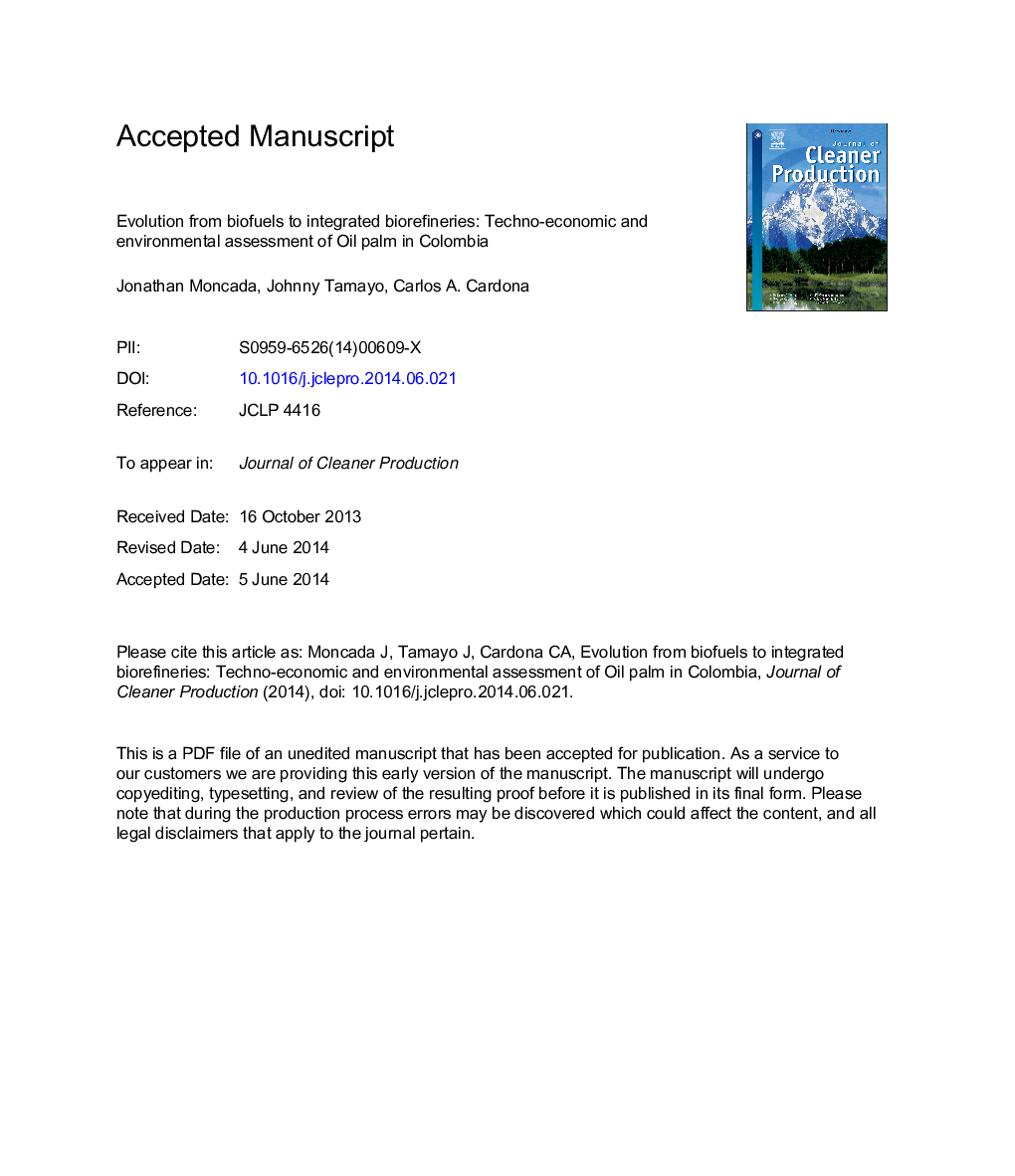| Article ID | Journal | Published Year | Pages | File Type |
|---|---|---|---|---|
| 8105734 | Journal of Cleaner Production | 2014 | 41 Pages |
Abstract
In this paper a techno-economic and environmental analysis for a biorefinery based on Oil palm is presented in non-bioenergy regions of Colombia as a case study. Different scenarios, based on process sequences, were modelled and assessed. This includes a standalone biodiesel plant, a biodiesel plant with mass integration, a multiproduct portfolio to produce biodiesel, ethanol, and poly-3-hydroxybutyrate, and the multiproduct portfolio plus mass integration. The configuration with the best economic and environmental performance was the multiproduct portfolio plus mass integration. For this case, the obtained economic margin was 64.5% (1.33 fold higher than standalone ethanol production), the potential environmental impact (PEI) was 156.42Â PEI/t products and 0.51Â t CO2eq/m3 of biodiesel. On the other hand, the feedstock transportation was included to measure the influence on economics and carbon footprint indicator. For a travelled distance of 300Â km the economic margin is decreased to 1.31%, and the carbon footprint increased up to 0.59Â t CO2eq/m3 of biodiesel for scenario 4.
Related Topics
Physical Sciences and Engineering
Energy
Renewable Energy, Sustainability and the Environment
Authors
Jonathan Moncada, Johnny Tamayo, Carlos A. Cardona,
